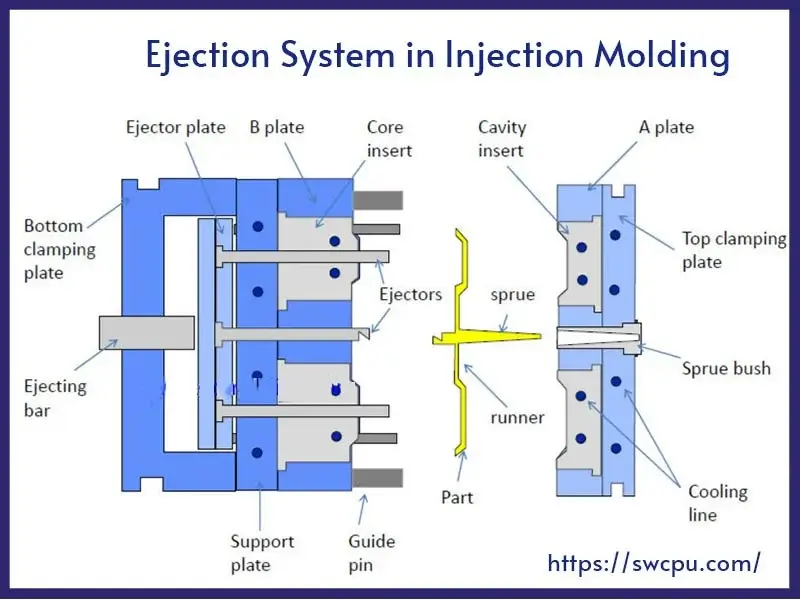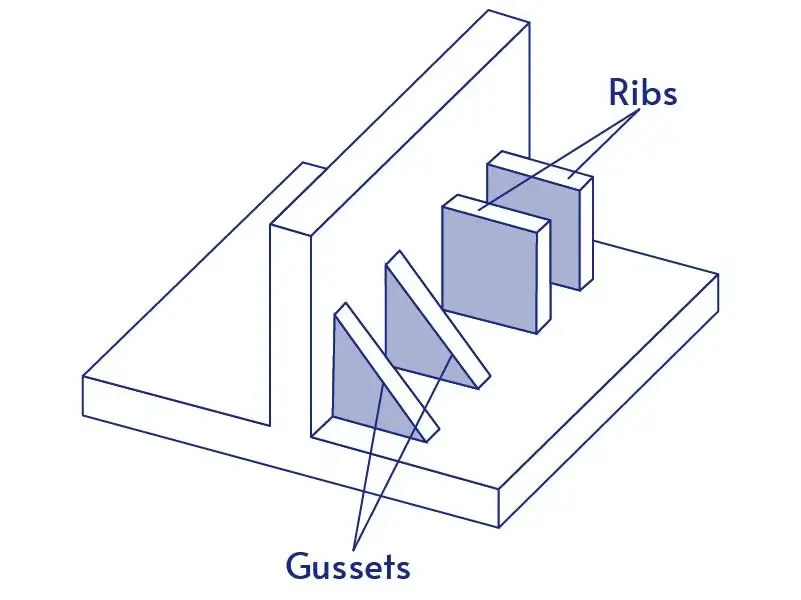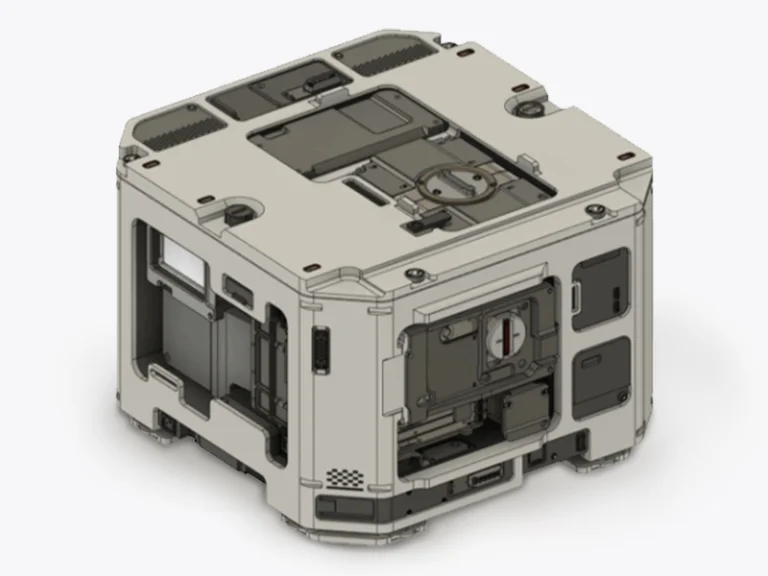Mold flow analysis, often referred to as mould flow analysis or plastic mold flow analysis, is a pivotal tool in modern injection molding. It is a specialized software that generates detailed color maps and data visualizations to guide design decisions and support Design for Manufacturability (DFM) improvements. This sophisticated simulation process empowers engineers to predict and optimize the behavior of molten plastic within a mold. By leveraging mold flow simulation, manufacturers can mitigate risks, enhance part quality, and streamline production. This article explores the role of mold flow analysis in injection molding, especially in material selection, and the benefits of mold flow analysis results to the injection molding process.

What is Mold Flow Analysis?
Mould flow analysis is a computational simulation technique. It models the flow, cooling, and solidification of molten plastic during injection molding. The process scrutinizes critical parameters—flow patterns, pressure distribution, cooling efficiency, and warpage tendencies. By simulating these dynamics, engineers gain a granular understanding of how a mold will perform. This foresight is invaluable. It allows for preemptive adjustments to mold design, ensuring robust production outcomes.
The analysis hinges on advanced software tools. Several software tools are widely used for mold flow analysis, including Autodesk Moldflow, Moldex3D, and Sigmasoft. These platforms integrate material properties, mold geometry, and process conditions to generate predictive models. Each provides a piece of the puzzle, revealing potential challenges before physical prototyping begins.
The Role of Mould Flow Analysis in Injection Molding
Mold flow analysis is a computer software used to analyze the injection molding process, optimizing product design, mold design, and manufacturing processes to improve quality, reduce costs, and shorten development cycles.
1. Material Selection
Mold flow analysis plays a critical role in material selection by simulating how different materials behave during injection molding, enabling engineers to choose the most suitable material for performance, cost, and production efficiency. Mould flow analysis supports this process in the following ways:
- Flow Behavior Analysis: Mold flow simulates a material’s flowability (e.g., Melt Flow Index, MFI) to evaluate its ability to fill complex molds. For instance, high-flow materials like polypropylene (PP) are ideal for thin-walled parts, while high-viscosity materials like polycarbonate (PC) may require higher pressure or temperature.
- Mechanical Performance Optimization: Mold flow predicts post-molding mechanical properties (e.g., tensile strength, impact resistance). For example, glass-filled nylon (e.g., PA66+GF) for enhanced rigidity, and Mold flow can simulate fiber orientation to ensure the part meets strength requirements.
- Thermal Properties and Shrinkage: Materials vary in thermal expansion and shrinkage, affecting dimensional accuracy. Mold flow simulates shrinkage during cooling to select low-shrinkage, stable materials like ABS or POM.
- Cost and Sustainability: Mold flow evaluates processing difficulty and cycle time to optimize costs. Economical materials like PP for rapid prototyping and high-performance options like PEEK for demanding applications. Mold flow helps balance material cost and performance while supporting sustainable choices like recyclable or bio-based materials.
- Practical Applications: Mold flow analysis to recommend materials tailored to specific needs. For medical devices, transparent PC may be suggested for optical clarity; for automotive parts, high-temperature-resistant PA66 may be ideal. Mold flow simulates these materials’ behavior in specific molds, reducing trial-and-error and accelerating development.
Mold Design Optimization
Moldflow analysis optimizes mold design by simulating melt flow, cooling, and solidification:
- Gate Placement and Number: Identifies optimal gate locations to ensure uniform filling and minimize weld lines.
- Runner Design: Optimizes runner size and layout to reduce pressure loss and material waste.
- Cooling System: Simulates cooling channel layouts for uniform cooling and shorter cycle times.
- Mold Strength: Evaluates stress distribution under high pressure to prevent mold deformation or failure.
Filling Analysis
Filling analysis simulates how the melt fills the mold cavity, identifying potential issues:
- Short Shot Risk: Detects whether the cavity can be fully filled, especially in thin-walled or complex geometries.
- Pressure Requirements: Assesses the injection pressure needed to ensure equipment compatibility.
- Weld Line Locations: Predicts melt front convergence points to minimize aesthetic or structural defects.
Flow Analysis
Flow analysis focuses on the melt’s behavior within the mold:
- Flow Balance: Ensures consistent filling across multi-cavity molds.
- Shear Stress: Evaluates shear stress distribution to prevent material degradation or surface defects.
- Flow Path: Optimizes runner and cavity design to reduce flow resistance and improve filling efficiency.
Warpage Analysis
Warpage analysis predicts part deformation during cooling and solidification:
- Uneven Shrinkage: Identifies warpage due to material shrinkage or uneven cooling.
- Residual Stress: Assesses internal stress distribution to prevent long-term deformation or cracking.
- Design Adjustments: Optimizes wall thickness, material, or cooling to minimize warpage risks.
Process Optimization
Moldflow analysis optimizes the injection molding process by simulating the entire cycle:
- Cycle Time: Optimizes filling, cooling, and ejection times to reduce production cycles.
- Process Parameters: Determines ideal injection temperature, pressure, and speed to minimize trial costs.
- Defect Prevention: Predicts defects like air traps, burn marks, or sink marks, adjusting parameters to improve yield.
Benefits of Mold Flow Analysis
Mold Flow Analysis is a powerful simulation tool that provides data-driven insights into the injection molding process, significantly enhancing efficiency and quality.
Optimized Mold Design, Fewer Revisions
Mold flow analysis identifies potential issues in mold design before manufacturing, such as suboptimal gate locations, runner layouts, or inadequate cooling systems. By simulating plastic flow, pressure distribution, and cooling behavior, engineers can refine mold structures to avoid costly design flaws. For instance, analysis may suggest adjusting gate positions to balance filling pressure, reducing the need for mold trials and revisions. This not only shortens the mold development cycle but also significantly lowers expenses associated with mold modifications.
Improved Part Quality, Reduced Aesthetic and Functional Defects
Mold flow analysis predicts and mitigates issues during the injection molding process, such as weld lines, air traps, short shots, or warpage. By identifying stress concentrations due to uneven cooling, for example, engineers can adjust cooling times or mold temperatures to ensure dimensional accuracy and surface quality. Additionally, the analysis optimizes weld line placement to minimize visual imperfections, enhancing both the mechanical performance and aesthetics of parts. This is particularly critical for high-precision industries like medical devices and consumer electronics.
Scientific Material Selection, Balancing Performance and Cost
Mold flow analysis enables informed material selection by simulating the behavior of various plastics (e.g., ABS, PC, PP, or nylon) in specific mold designs, including flow, shrinkage, and cooling characteristics. This allows engineers to choose materials that meet functional requirements while optimizing cost. For example, the analysis may indicate that a high-flow material is ideal for thin-walled parts, while a high-strength material suits structural components. It also evaluates material shrinkage and compatibility with mold surfaces, preventing defects or processing issues, thus achieving an optimal balance between performance and cost.
Reduced Production Costs, Faster Time-to-Market
By optimizing process parameters—such as injection pressure, mold temperature, and cooling time—mold flow analysis shortens cycle times, minimizes material waste, and reduces scrap rates. For instance, well-designed runners lower flow resistance, saving energy, while precise cooling system adjustments reduce cooling time, boosting production efficiency. Moreover, by minimizing mold trials and revisions, mold flow analysis directly cuts development costs. These optimizations collectively accelerate the journey from design to market, giving businesses a competitive edge in fast-paced industries.
Conclusion
By simulating and optimizing every aspect of the molding process—from material selection to mold design and production parameters—mold flow analysis ensure that injection molded parts meet the highest standards of precision and durability while minimizing defects such as warpage, weld lines, or short shots. This not only enhances product quality but also significantly reduces development time and production costs, allowing the products to bring their products to market faster. At Jiangzhi, a leading on-demand manufacturing provider specializing in injection molding services, we leverage the power of mold flow analysis to deliver unparalleled results for our clients.




